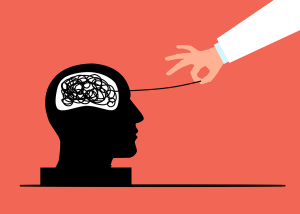How to Stop Ruminating on Negative Thoughts
 You made a small mistake at work, and you can’t stop thinking about it. You’re replaying the moment over and over in your head, analyzing it from every angle, beating yourself up. Or maybe you’re feeling anxious about the future, and your mind is stuck in a loop of “what if” questions that you can’t seem to turn off. This pattern of getting stuck on a negative thought or a problem and chewing on it endlessly is called rumination. It’s like a cow chewing its cud, but instead of grass, you are chewing on your own painful thoughts.
You made a small mistake at work, and you can’t stop thinking about it. You’re replaying the moment over and over in your head, analyzing it from every angle, beating yourself up. Or maybe you’re feeling anxious about the future, and your mind is stuck in a loop of “what if” questions that you can’t seem to turn off. This pattern of getting stuck on a negative thought or a problem and chewing on it endlessly is called rumination. It’s like a cow chewing its cud, but instead of grass, you are chewing on your own painful thoughts.
At Televero Health, we see rumination as a key driver of both depression and anxiety. It can feel like you are trying to solve a problem, but in reality, you are just spinning your wheels in the mud, digging yourself deeper into a negative emotional state. Learning to interrupt this pattern is a critical skill for your mental health.
Rumination vs. Problem-Solving
It’s important to distinguish between rumination and healthy problem-solving. Problem-solving is an active, constructive process. You identify a problem, you brainstorm potential solutions, and you take action. It is forward-looking and aimed at finding a resolution.
Rumination, on the other hand, is a passive and destructive process. You are not looking for solutions; you are just passively replaying the problem or the feeling over and over again. The focus is often on the past (“Why did that happen? Why am I like this?”) or on unanswerable questions about the future. It is a repetitive, circular, and unhelpful pattern of thought.
Why Do We Ruminate?
We often ruminate because, on some level, our brain mistakenly believes that it is being helpful. It feels like if we just think about the problem hard enough, we can figure it out or prevent it from happening again. But rumination doesn’t lead to insight; it just amplifies your negative emotions. It keeps you stuck in the past and fuels feelings of depression and anxiety.
Techniques to Interrupt the Rumination Cycle
Because rumination is a mental habit, you can learn to break it. The key is to catch yourself in the act and to consciously shift your attention to something else. This takes practice.
1. Schedule a “Worry Time”
This might sound strange, but it can be very effective. Instead of letting your ruminations take over your whole day, you make an appointment with them. Set aside a specific, limited period of time each day (e.g., 15 minutes at 5:00 PM) as your designated “worry time.” When you catch yourself ruminating outside of that time, you gently tell yourself, “I’m not going to think about this now. I will save it for my worry time.” This allows you to acknowledge the thought without letting it hijack your attention. When your worry time arrives, you can let yourself ruminate freely, but you must stop when the timer goes off.
2. Engage in Mindful Distraction
The goal is to shift your attention to something that requires your full focus, particularly something that engages your senses. This is not about avoiding your feelings, but about interrupting an unhelpful thought pattern. Good distraction activities are:
- Engaging: They need to be interesting enough to hold your attention (e.g., listening to a podcast, working on a puzzle, calling a friend to talk about something else).
- Physical: Getting up and moving your body is a great way to get out of your head. Go for a brisk walk, do some stretching, or put on some music and dance.
3. Practice Mindfulness
Mindfulness is the long-term solution to rumination. It is the practice of learning to observe your thoughts without getting entangled in them. When you notice a ruminative thought, you can simply label it (“ruminating”) and then gently guide your attention back to the present moment, perhaps to the sensation of your breath. You are learning to let the thoughts be there without having to get on the train and ride them around in circles.
4. Take One Small, Problem-Solving Step
If your rumination is focused on a specific, solvable problem, ask yourself: “What is one small, concrete action I can take right now to move toward a solution?” Instead of endlessly worrying about a big project, the action might be to just write the first email. Taking a small step can break the feeling of helplessness and shift you from passive rumination into active problem-solving.
You do not have to be a prisoner of your own repetitive thoughts. By practicing these skills, you can learn to notice when your mind is stuck in the mud and to gently, firmly, pull it out and place it on a more solid and helpful path.
Key Takeaways
- Rumination is the unhelpful pattern of getting stuck in a repetitive loop of negative thoughts, which is different from constructive problem-solving.
- This mental habit is a key driver of both depression and anxiety.
- You can learn to interrupt the cycle by scheduling a specific “worry time,” engaging in mindful distraction, or taking one small, problem-solving action.
- The long-term solution is mindfulness, which is the practice of learning to observe your thoughts without getting entangled in them.
Ready to take the first step? We can help. Get started with Televero Health today.
